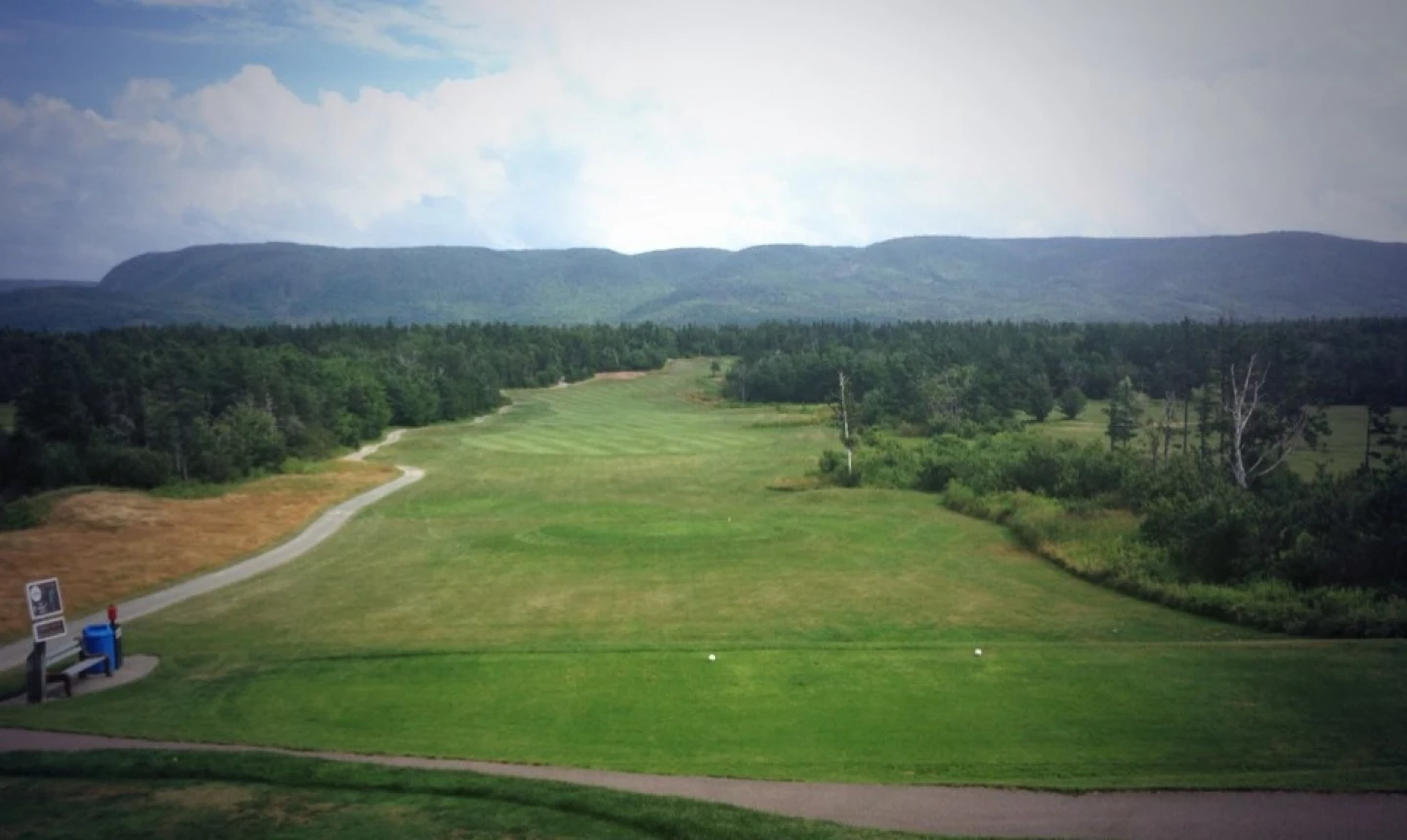INGONISH, Nova Scotia -- There are great golf courses in the world far easier to find than Highlands Links Golf Club, located in Cape Breton Highlands National Park. From Halifax International Airport, it's about a five-hour, winding drive, mountainous in spots.
So why have I returned for a second round in less than two years? Well, I've got some unfinished business with a gal named "Mucklemouth Meg."
Otherwise known as Highlands' gorgeous, par-5 sixth hole, Meg's been on my mind for awhile now.
In fact, there are a lot of holes here I want another shot at. Not only are Highlands' hole names (including such gems as "Canny Slap," "Cuddie's Lugs" and "Tattie Bogle") among the best in golf, but the design by Stanley Thompson features one of the finest collections of unique holes you'll ever walk. "Killiecrankie," an uphill, double-dogleg par 5 tumbling narrowly through dense forest, is tough enough for modern golf. One can only imagine playing this beast -- relatively unchanged since Thompson laid it out -- with hickories and gutta-percha balls.
This time around, I'm paired up with three local members who walk this 11-kilometer excursion 3-4 times a week (and roll their eyes a bit when they notice a youngster on the first tee in a golf cart). Their accents sound a bit like a mix of Scotland and Canadian, and their love of the game and their treasured home course is apparent.
One of them is Keith Hawley, a resident of Ingonish his whole life. He got into the game by caddying here. He's seen strange things happen at Highlands Links, like his son-in-law recording three hole-in-ones here in a week. He's seen Thompson's course change over time in ways few others could tell, from droughts to days of knee-high rough to redesigns to today's form.
"The last 3-5 years it's in the best shape I've seen it," Hawley said. "It gets better every year."
His compliments are a testament to Operations Manager Graham Hudson and his team from making this course better and better. Clearing of overgrowth has been a major point of emphasis.
Since my last visit, more clearing has been done to create incredible mountain and ocean views, and the par-4 18th now comes with an ocean view from the tee -- and some added breeze to deal with in the fairway. Current plans call for the raising of the par-3 12th hole a few feet, which is susceptible to flooding from the Clyburn River.
Considering the brutal winter the Maritimes had (like just about everywhere in the north) and the fact that Parks Canada doesn't have the funds to hire a superintendent (is there another course in the top 100 without one?), makes the fact Highlands holds its own among the best in Canada that much more remarkable.
From Ingonish to Inverness on the Cabot Trail
It's a 172-kilometer drive on the world famous Cabot Trail between Canada's top one-two punch: Highlands Links and Cabot Links.
For those up for it (and if you've come this far, it'd be idiotic not to be), spectacular scenery awaits. High, coastal overlooks, a surreal inland stretch through the lush and green Aspy Fault, plus a smattering of roadside cafes and shops, make it one of the continent's great drives.
Don't rush it; allow an extra couple hours time for a few pit stops.
On the western side of the island in Inverness lies Canada's first true links, Cabot Links. Since I was last here, with the hotel freshly opened and fescue turf still taking hold, it had matured marvelously. Greens are now firm and rolling well, and fairways look and feel great.
"A little too green in some places," Director of Golf Joe Robinson noted as we walked them on a calm, sunny morning. But make no mistake, Cabot is a pure links test, with plenty of brown and its accompanying unpredictable bounces.
There's even a new hole since I was here last: The par-3 12th now plays higher up, affording better views -- though Robinson notes it can be one of the windiest spots on the course now.
In the afternoon, we drove up to the site of Cabot Cliffs, where the construction crew was hard at work getting the course fully shaped and seeded (opening date is currently set for summer of 2015).
Rod Whitman, architect of Cabot Links, was manning the bulldozer on the front nine, while designer Bill Coore and his team were nearby surveying green sites and shaping progress. The back nine, meanwhile, has been seeded and some holes on the highest ground look practically ready to go.
The hole at Cabot Cliffs that's been getting attention since the project was announced is the par-3 16th: a mighty, clifftop tee shot over a tiny cove (looking down at the small sliver of beach, I wonder if anyone will ever try to go down there and play their ball) to a green defended by huge, jagged rocks. When it opens, Canada's most famous par 3, Thompson's "Devil's Cauldron" at Banff Springs, will be given a run for its money.
As the course heads back along the coast towards the south and town, the cliffs slowly reduce in size, and the front nine, meanwhile, plays on this lower, sandier dunes ground with some wetlands, much like a few spots at Cabot Links. The par-5 sixth hole (one of six par 5s -- there are also six par 3s on the routing), wrapping left around wetlands, is shaping up to be the perhaps the best hole of the front nine.
The big question, of course, is when Cliffs opens, will it unseat Cabot Links (rated no. 2 in ScoreGolf's latest Top 100 in Canada and no. 42 in Golf Digest's inaugural World's Top 100 ranking)? Granted, we're comparing apples to appleseeds right now, but I'm not ready to proclaim Cliffs as a slam-dunk favorite. Cabot Links is a sublime walk, particularly around the turn and down the finishing stretch, feeling all too Scottish as it plays beside the heart of town, complete with church steeple backdrops.
The Cliffs will earn plenty of magazine covers with a few holes, but the bar is quite high at Whitman's original course in town.
Also on the Cabot Trail: Le Portage Golf Club
If you want to break up the drive between Ingonish and Inverness, stop off at a little local club in Cheticamp, Le Portage Golf Club. It's affordable (green fees $59 CAN+cart), and don't let the entrance passing some warehouse-looking buildings fool you.
On the other side of the clubhouse is nothing but a green expanse of mountain backdrops, wild roses and berries growing just off the fairways.
For more information, visit GolfCapeBreton.com.





















